A wood burning stove is more than a source of heat—it’s a timeless centerpiece that combines functionality with aesthetic appeal. As energy efficiency and sustainability become priorities for many households, the wood burning stove is experiencing a resurgence in popularity. This comprehensive guide will explore everything about wood burning stoves, including their types, benefits, installation, maintenance, and more, giving you all the knowledge to make an informed decision.
What is a Wood Burning Stove?
A wood burning stove is a closed appliance that burns wood or wood-based biomass to generate heat. Unlike an open fireplace, a wood burning stove provides a controlled environment for combustion, increasing efficiency and reducing heat loss. The design includes a firebox, glass door, flue, and chimney, ensuring safety and functionality.
Modern wood burning stoves have evolved from traditional models, offering better efficiency, reduced emissions, and innovative designs to suit contemporary homes.
History of Wood Burning Stoves
The origins of the wood burning stove can be traced back to the 16th century when they were developed as an improvement over open fireplaces. Initially made of iron, these stoves became popular for their ability to retain heat for longer periods. Over time, technological advancements have transformed the simple wood burning stove into a sophisticated heating system, balancing utility with style.
Why Choose a Wood Burning Stove?
1. Energy Efficiency
A wood burning stove can achieve up to 80% efficiency, significantly reducing heat loss compared to traditional fireplaces. This means more warmth for less fuel, making it an economical choice.
2. Environmental Benefits
Using a wood burning stove with sustainably sourced wood reduces your carbon footprint. Wood is a renewable resource, and burning it releases only as much carbon dioxide as the tree absorbed during its lifetime.
3. Independence from Power Grids
A wood burning stove is a reliable heat source during power outages, providing warmth and cooking capabilities when electric systems fail.
4. Enhanced Home Value
Installing a wood burning stove can increase your property’s value by adding a desirable feature that appeals to potential buyers.
Types of Wood Burning Stoves
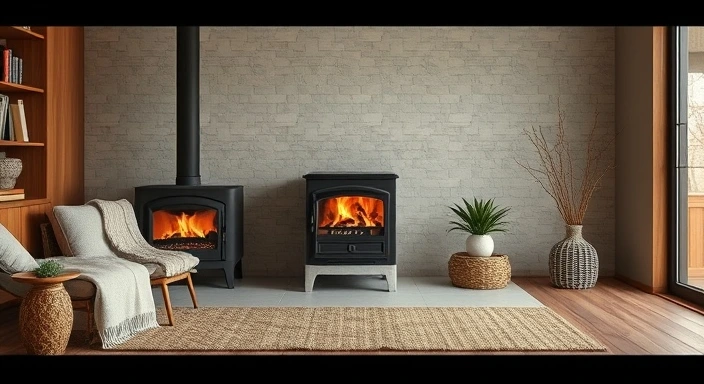
1. Traditional Cast Iron Stoves
Known for their durability and excellent heat retention, cast iron stoves are ideal for long-lasting warmth.
2. Modern Steel Stoves
These stoves heat up quickly and are lightweight, making them a convenient choice for modern homes.
3. Insert Stoves
Designed to fit into an existing fireplace, insert stoves maximize space efficiency while retaining the charm of a fireplace.
4. Double-Sided Stoves
Perfect for open-plan homes, double-sided stoves provide heat and ambiance to two rooms simultaneously.
5. Multi-Fuel Stoves
A versatile option, these stoves can burn wood, coal, or pellets, catering to diverse heating needs.
Choosing the Best Wood for Your Stove
The type of wood you use significantly impacts the performance of your wood burning stove. Here’s what you should know:
- Hardwoods: Oak, birch, and maple burn longer and produce more heat, making them ideal for stoves.
- Softwoods: Pine and fir ignite quickly but burn faster, making them suitable for kindling.
- Seasoned Wood: Always use wood with a moisture content below 20% to reduce smoke and enhance efficiency.
Avoid burning treated or painted wood, as it releases harmful chemicals into the air.
Installation of a Wood Burning Stove
Installing a wood burning stove requires careful planning to ensure safety and compliance with regulations. Follow these steps:
- Choose the Right Location
Select a spot that optimizes heat distribution while maintaining a safe distance from flammable materials. - Prepare the Hearth
The stove must sit on a non-combustible hearth that extends beyond its edges to protect your floor. - Install the Chimney
A chimney or flue system is essential for proper ventilation. Hire a professional to ensure it meets building codes. - Conduct Safety Tests
Before lighting your first fire, have a professional inspect the installation for safety and functionality.
Operating Your Wood Burning Stove
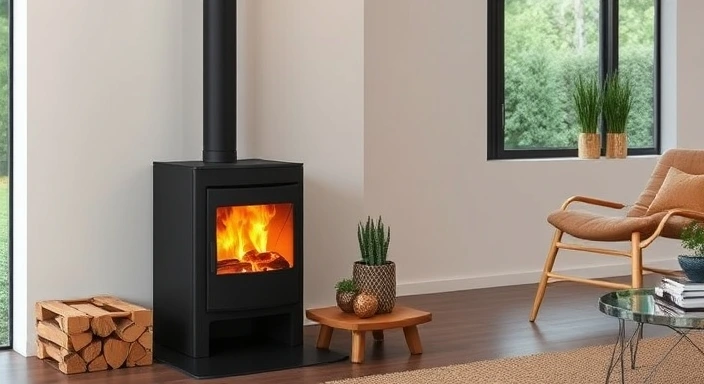
- Start with Kindling
Use small pieces of dry wood to ignite the fire. Arrange them in a crisscross pattern for optimal airflow. - Add Larger Logs Gradually
Once the kindling is burning steadily, add larger logs. Avoid overloading the firebox, as it can reduce efficiency. - Control the Airflow
Adjust the stove’s vents to regulate airflow and control the burn rate. Proper airflow ensures a clean and efficient fire. - Monitor the Fire
Always keep an eye on your wood burning stove to ensure safety and maintain consistent heat.
Maintenance Tips
- Regular Cleaning
Remove ash from the firebox and clean the glass door to maintain visibility and performance. - Inspect the Chimney
Have your chimney inspected and cleaned annually to prevent creosote buildup, a common cause of chimney fires. - Check for Leaks
Inspect the seals around the stove door and flue to ensure no air leaks affect efficiency. - Use a Moisture Meter
Test your wood for moisture content to ensure it’s properly seasoned.
Enhancing Efficiency
1. Use a Stove Fan
A stove fan helps circulate warm air throughout the room, improving heat distribution.
2. Install a Thermometer
Monitoring your stove’s temperature ensures you maintain optimal burn conditions.
3. Insulate Your Home
Proper insulation minimizes heat loss, allowing your wood burning stove to heat your home effectively.
Trends in Wood Burning Stoves
Modern wood burning stoves now come with advanced features like:
- EcoDesign Standards: Low-emission models compliant with European regulations.
- Smart Technology: Automated temperature controls and app connectivity.
- Innovative Designs: Sleek and compact models to suit contemporary spaces.
Safety Tips
- Keep a fire extinguisher nearby.
- Install smoke and carbon monoxide detectors.
- Store wood away from the stove to prevent accidental ignition.
How to Save Money with a Wood Burning Stove
Investing in a wood burning stove can lead to long-term savings on heating costs. To maximize savings:
- Buy wood in bulk during off-seasons.
- Opt for a high-efficiency model.
- Perform regular maintenance to avoid costly repairs.
A Brief History of Wood Burning Stoves
The journey of the wood burning stove began centuries ago when open hearths dominated homes as the primary source of heat and cooking. By the 16th century, stoves made from clay or iron emerged, offering a safer, more efficient way to harness the energy of wood.
The industrial revolution brought mass production, allowing wood burning stoves to become accessible to the average household. Over time, they have evolved from rudimentary designs to sophisticated, eco-friendly appliances.
Today’s wood burning stoves blend traditional functionality with modern aesthetics, catering to various tastes and needs.
How a Wood Burning Stove Works
At its core, a wood burning stove is a simple but efficient system designed to generate heat from burning wood. Here’s how it functions:
- The Firebox
The firebox is where the wood burns. Made of durable materials like cast iron or steel, it can withstand high temperatures. - Airflow Control
Adjustable vents allow users to control the amount of oxygen feeding the fire, which affects the intensity of the burn. - Glass Door
A heat-resistant glass door provides a view of the flames while containing the heat within the stove. - Flue or Chimney
The flue or chimney expels smoke and gases, ensuring clean and safe operation. - Heat Exchange
The stove absorbs heat from the fire and radiates it throughout the room, warming the space effectively.
Benefits of a Wood Burning Stove
1. Cost Savings
With rising energy costs, a wood burning stove offers a cost-effective alternative. By relying on wood instead of electricity or gas, homeowners can significantly lower their heating bills.
2. Eco-Friendly Heating
When used with sustainably sourced wood, a wood burning stove is a carbon-neutral option. Unlike fossil fuels, burning wood releases no more carbon dioxide than the tree absorbed during its growth.
3. Reliability During Power Outages
A wood burning stove doesn’t rely on electricity, making it an excellent backup heat source during power outages.
4. Ambiance and Charm
Few heating solutions match the ambiance of a crackling fire in a wood burning stove. Its warm glow creates a cozy and inviting atmosphere.
5. Versatility
Some models allow cooking on top of the stove, adding to its functionality.
Modern Types of Wood Burning Stoves
1. Freestanding Stoves
Freestanding wood burning stoves are standalone units that radiate heat in all directions.
2. Inset Stoves
Built into a wall or existing fireplace, inset stoves save space and offer a sleek look.
3. Double-Sided Stoves
Ideal for open-plan spaces, these stoves provide warmth and ambiance on both sides.
4. Pellet Stoves
Pellet stoves use compressed wood pellets, offering automated feeding systems for convenience.
5. Multi-Fuel Stoves
These stoves allow the use of wood, coal, or other fuels, making them highly versatile.
Choosing the Right Stove for Your Home
Selecting the best wood burning stove depends on several factors:
- Room Size
A small stove is sufficient for compact spaces, while larger rooms require higher heat output. - Efficiency Rating
Look for stoves with an efficiency rating of 70% or higher for optimal performance. - Aesthetic Preferences
Whether you prefer a traditional or modern design, there’s a wood burning stove to match your style. - Budget
Prices vary widely depending on size, material, and features. Set a budget that balances quality and affordability.
Environmental Impact of Wood Burning Stoves
The environmental impact of a wood burning stove depends on how responsibly it’s used. To minimize your ecological footprint:
- Use sustainably sourced wood.
- Burn only seasoned wood with low moisture content.
- Choose an EcoDesign stove to reduce emissions.
Modern wood burning stoves are designed to meet strict environmental standards, making them a greener option than older models or fossil fuel-based heating systems.
How to Improve Heat Efficiency
Maximizing the efficiency of your wood burning stove ensures you get the most warmth from every log. Here’s how:
- Use a Stove Thermometer
Monitor the stove’s temperature to maintain the ideal burn rate. - Invest in a Stove Fan
A stove fan circulates heat throughout the room, reducing cold spots. - Insulate Your Home
Proper insulation keeps the heat generated by your stove inside your home, improving overall efficiency. - Burn Dry Wood
Wet or green wood burns inefficiently and produces more smoke, reducing heat output.
Caring for Your Wood Burning Stove
Regular maintenance ensures your wood burning stove remains safe and efficient. Follow these tips:
- Chimney Cleaning
Clean your chimney or flue at least once a year to prevent creosote buildup. - Inspect Seals and Gaskets
Check the seals around the door and glass for air leaks, and replace them if necessary. - Ash Removal
Remove ash frequently to maintain proper airflow. - Annual Professional Inspection
Have a professional inspect your stove and chimney annually to ensure safe operation.
Trends in Wood Burning Stoves
The future of wood burning stoves lies in innovation and sustainability. Modern trends include:
- Smart Controls: Stoves with app-controlled temperature settings.
- EcoDesign Compliance: Low-emission models that meet strict environmental standards.
- Compact Designs: Stoves designed for small spaces without compromising performance.
Enhancing Home Value with a Wood Burning Stove
Adding a wood burning stove to your home can increase its market appeal. Potential buyers value the energy efficiency, charm, and reliability these stoves offer, making them a sound investment.
Conclusion
A wood burning stove is more than just a heating device; it’s a centerpiece of comfort, efficiency, and sustainability. By understanding its benefits, types, and proper maintenance, you can enjoy the warmth and charm of this timeless heating solution for years to come. Whether you’re upgrading your home or embracing a more sustainable lifestyle, a wood burning stove is a choice that balances tradition and modernity perfectly.
If you need further expansion or specific sections elaborated, let me know!
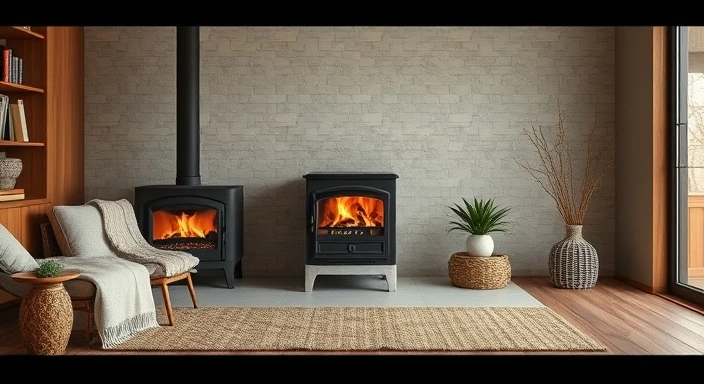
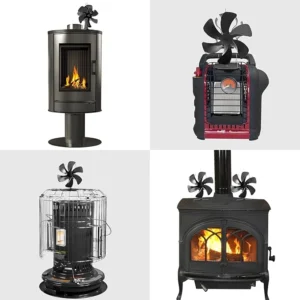
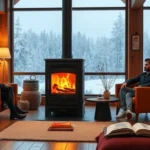




1 thought on “The Ultimate Guide to Wood Burning Stoves: Everything You Need to Know”
Comments are closed.